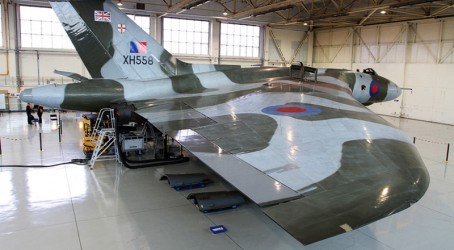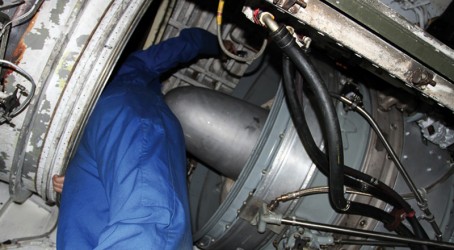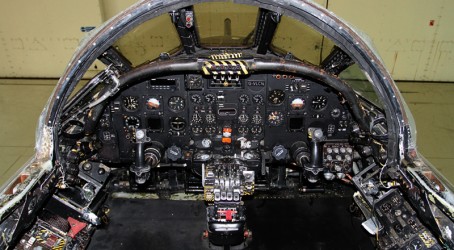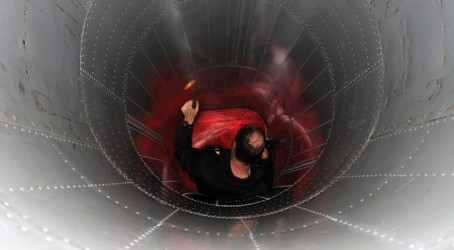The fight to keep the last airworthy Vulcan Cold War bomber in the skies has been an epic battle of will against lack of cash. The Vulcan to the Sky Trust, comprising mainly volunteers, has done an admirable job in raising the many millions of pounds that have been required to restore the plane, number XH558, to its former glory. But the challenge is ongoing: more money is needed to pay for vital maintenance to keep the aircraft safe for operation.
Dr Robert Pleming, the trust’s chief executive, admits that lack of cash is a constant hindrance to the project. And he warns that funding problems could result in the Vulcan being grounded forever.
“A famously spectacular year lies ahead for XH558, but only if we can get through the next two months,” he says.
“We have faced many challenges over the years, and nothing in life at the moment seems to be easy. Let’s hope our example of grit and determination to succeed against the odds can inspire individuals and companies alike to build a better future.”
Pleming says that this year promises to be perhaps the pinnacle of XH558’s career, with plans for the aircraft to help celebrate the Queen’s Diamond Jubilee, other national commemorative events, an extensive display season, and the Diamond Jubilee of the Vulcan itself on 30 September. But before the trust can capitalise on these opportunities, it needs to get the plane through its winter service. Right now, its funding reserves fall short – £110,000 is still needed to complete the service. Furthermore, because of supplier lead times, these extra funds are needed by the end of February if XH558 is to be flying in time for the first of the year’s commemorative events. The cash shortfall means the winter service has been suspended, so it’s a desperate situation.
“This could be the fifth consecutive year that XH558 thrills audiences the length and breadth of Great Britain,” says Pleming. “That XH558 was restored to flight and has displayed for four years during the worst economic crisis that the world has seen for many years is a huge testament to our supporters. It would be a monumental tragedy if XH558 failed in this, its most important year.”
The winter service began last month. The trust says that the 51-year-old aircraft is in excellent condition, with no major faults discovered as the first phase of inspections near completion. The trust’s engineering director Andrew Edmondson explains: “We are nearing the end of the inspection phase of the first service package, which includes the ejection seats, canopy, flying controls and airbrakes, so have a good feel for the scope of work and the replacement parts that we need to source. So far we have found no major problems, it has been about general wear and tear. The Vulcan is a remarkably serviceable aircraft.”
Like a car, the Vulcan receives different levels of service each year. The simplest is the intermediate service, developed by the trust to allow the aircraft to be maintained to the standards required by the Civil Aviation Authority while accommodating the relatively low usage of the aircraft’s current life. Equivalent to a car’s oil service, the intermediate includes inspection and lubrication of key systems and a condition and safety check.
Every second year, a much larger service is conducted, known as a “minor”. Next is a minor*, conducted every four years, which adds a substantial number of additional inspection and maintenance operations. Beyond this, there are minor** and major service plans. This year’s service is a modified minor* and will be completed in three packages.




The first package of winter service work has meant careful dismantling of certain parts of the aircraft. The exhaust nozzle shrouds were removed for inspection and dehumidifiers were linked up to extract any moisture to help prevent corrosion. The thermocouples used to read the exhaust gas temperature have been taken apart and assessed, with checks made on their electrical connection back to the cockpit instruments.
The open brake parachute has been removed and sent off for repacking, and the trust has two new parachutes on order to make up the required minimum number needed to operate a full flying season.
Most inspection tasks in the first package are now complete and only 13 faults have been detected. These range from simple problems with corroded electrical connectors to a kinked delivery pipe within the cockpit oxygen system. One of the plane’s hydraulic pumps had a static leak, which has now been sealed. And there was some minor damage to one of the undercarriage doors and to the trailing edge.
“Rectification of the majority of these appears to be straightforward and we have most of the components we need in our stores,” says Edmondson. “Considering the age and technology content of this aircraft, our team of just five ground crew has done a fantastic job keeping her in excellent condition.”
In addition to routine maintenance, components that have reached the end of their installed life must be removed for refurbishment or replacement. Many of these will be sent to suppliers that have the skills, facilities and certification to carry out highly specialised testing and repairs. This all costs money: if suppliers can’t be paid, parts will not be supplied.
The immediate cash shortfall – £30,000 – is needed to pay for refitting the ejector seats. “Until we get these funds I have had to suspend the service – putting the aircraft into a period of what we call ‘anti-deterioration’. Lack of funding is now holding up the service. So it’s vital that people pledge more funds by buying ‘shares’ through our website.”
The final phase of inspection will be a non-destructive testing programme, which uses X-rays to look deep inside the aircraft’s metal structure to identify any cracks before they compromise safety. Edmondson says that, thanks to an airshow routine that is carefully planned to minimise airframe stress, he doesn’t expect to find any problems.
So while the plane itself is in good shape, the same can’t be said of the trust’s finances, despite huge efforts to secure new income streams. Pleming says the trust has not had to go public with a “crisis appeal” since 2010, thanks to new funding arrangements. “We have worked hard to develop trading initiatives, giving something tangible back in return for cash – as exemplified by bomb-bay plaques, hangar tours and merchandise sales. This has proved successful; we have managed to survive despite the loss of 10 airshows last year.”
But he admits that unless the financial position improves markedly in the coming weeks, the Vulcan is in danger of not being ready in time for its first flying display of the year, booked for late spring.
Despite these troubles, Edmondson believes the Vulcan has a future as an airworthy plane. “I have to be optimistic,” he says. “This is a valuable piece of aviation history. It needs to survive.”
Return to the skies
Avro Vulcan XH558 was delivered from the factory it was built in at Woodford, near Manchester, to RAF Waddington near Lincoln on 1 July 1960. It was the first Vulcan B Mk 2 to be received into service with the RAF, and it is now the oldest complete plane of its kind.
XH558 was also the last Vulcan to leave RAF service, flying on from 1986 to 1993 as the single air force display Vulcan. Its final flight was on 23 March 1993 to Bruntingthorpe aerodrome in Leicestershire, having been sold off by the Ministry of Defence to C Walton, a family firm which maintained the plane with the thought that one day it might be returned to the skies.
In 1997, a small team headed by Dr Robert Pleming started to put together a plan to return the Vulcan to flight, but it was clear from the start that the project would be technically challenging and enormously expensive. Never deterred, the team set off down the path that led to XH558’s return to the air, an aim that was finally achieved in 2007.